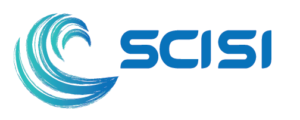401k
HOW TO HAVE A SUCCESSFUL 401K PLAN THAT WORKS FOR YOUR COMPANY AND YOUR TEAM
The following is a list of ideas for increasing participation in your 401K Plan. As participation increases generally the results of the required non-discrimination testing become more favorable. We’ve listed the strategies in order of increasing cost (usually in terms of the employer contributions) and administrative complexity.
- Employee Encouragement to participate:
The 401(k) plan that you sponsor is one of the most powerful tools available to the average worker for building a secure retirement. Simply encouraging employees to participate is a low cost means of increasing participation, and can be a very satisfying way of helping your employees save for their future.
Often when we see plans with high participation, we discover that there is one individual, or perhaps a group of individuals, who are the “cheerleaders” for the plan, and really make certain that all employees realize the importance of saving for their retirement. We can help educate your employees and identify “cheerleaders” within your company, to help motivate employee participation.
- Saver’s Tax Credit:
The IRS allows certain lower income participants to reduce their tax liability with a dollar-for-dollar tax credit that represents a percentage of the amount that they defer into a 401(k) plan. The amount of the credit is determined by their income, filing status, and the amount that they defer. While not applicable to everyone, the Saver’s Tax Credit may encourage some lower income participants to participate in the Plan.
- Participant Education
We can help your employees take advantage of a great number of tools to educate them on the importance of participating early, how to enroll, and how to choose the proper investments. Even a small level of contribution gets the participant into the habit of saving and can help improve the outcome of the required nondiscrimination testing.
- Employer Match
Now we are getting into the strategies that have some cost involved. An employer match, no matter how small, usually helps to increase participation. Most employees, if they do not realize it already, can be educated to understand that it makes sense to participate at least to the level at which they are receiving the maximum employer match. Whether employees think of the match as “free money” or an instant return on their investment, a match is a powerful motivator in increasing participation.
How the match is structured can also improve deferral rates:
- For example, a match formula of 100% of the first 3% of compensation deferred has the same potential cost as a match formula of 50% of the first 6% of compensation deferred. If every participant deferred at a level to receive the maximum match, the cost to the employer of 3% of compensation is the same under both formulas. The difference is that under the second match formula the participant must defer at a higher level to receive the full match.
- The vesting (employee ownership) schedule attached to the matching contributions may also help or deter plan participation. For example, many plans use a 6 year graded vesting schedule that starts vesting at 20% with 2 years of service and fully vests with 6 years of service. Some participants may not see value in participating if the match is not fully vested for six years. On the other hand, a vesting schedule that starts with 25% vesting with one year of vesting service and fully vests after 4 years of service for example, may encourage participation.
- Automatic Enrollment
Under automatic enrollment provisions, an employee who becomes eligible to participate and does not either elect to enroll or elect to opt out of enrollment is automatically enrolled by the HR team at a default deferral rate.
Properly executed, an automatic enrollment program can dramatically increase participation levels. What most employers who begin an automatic enrollment program discover is that the same inertia that causes an employee to not complete an enrollment form to begin participating, also causes an automatically enrolled employee to not take the effort to subsequently opt out.
Automatic enrollment programs can increase the cost of the plan both in terms of increased administration costs and an increase in matching contributions (if applicable). A properly run program also requires additional employee notice requirements and strict oversight to ensure that employees are properly enrolled.
- Safe Harbor 401(k) Plans
Perhaps the most costly of the strategies listed here, a Safe Harbor 401(k) plan permits an employer to make a required, 100% vested contribution in exchange for not having to pass the nondiscrimination testing. In addition to the required contribution there is also an annual notice requirement, certain distribution restrictions, and plan document requirements.
Once the safe harbor provisions are in place, which generally must be at the start of a new plan year, all highly compensated employees are permitted to defer to the maximum deferral limit without concern for passing the nondiscrimination tests.
Please do not hesitate to contact our office if you would like to discuss what type of 401(k) plan makes sense for your company.
